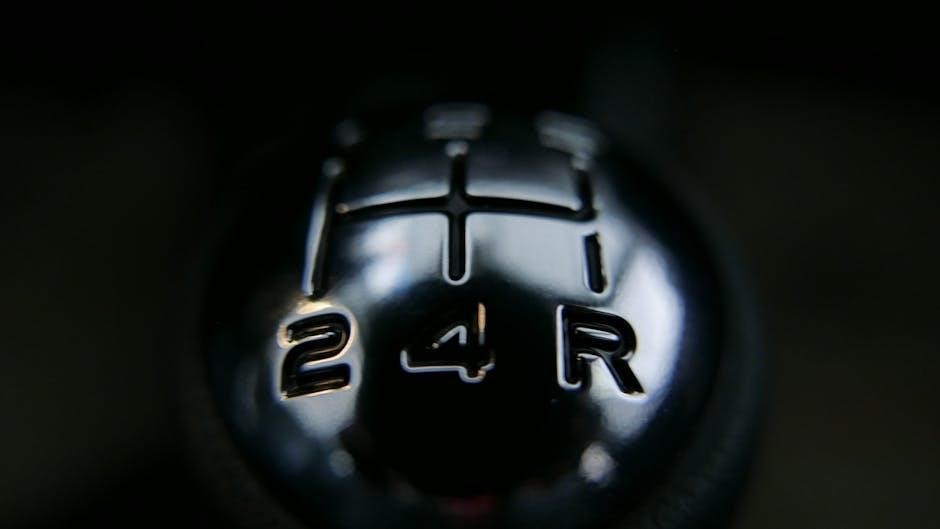Converting a manual to automatic transmission is a complex, costly process, often requiring extensive modifications and expert labor, making it viable only for enthusiasts or specific needs.
Overview of Manual to Automatic Transmission Conversion
Converting a manual gearbox to an automatic transmission involves replacing the manual system with an automatic one, offering a smoother driving experience. This process is ideal for drivers seeking convenience, especially in heavy traffic. However, it requires significant mechanical and electrical modifications. The conversion involves swapping the gearbox, adjusting the drivetrain, and reconfiguring the vehicle’s electronics. While it enhances ease of use, it also adds complexity and cost. Proper planning and expertise are essential for a successful conversion.
Understanding the Differences Between Manual and Automatic Transmissions
Manual transmissions require driver input to change gears using a clutch pedal and gearshift, offering control over acceleration. Automatic transmissions shift gears automatically, enhancing convenience. Manual transmissions are typically lighter, more fuel-efficient, and cost-effective, appealing to driving enthusiasts. Automatics prioritize ease, especially in traffic, but may lack the engagement of manuals. Each system caters to different driving styles and preferences.
Key Components of Manual and Automatic Transmissions
Manual transmissions consist of a clutch, gearshift, and synchromesh system, enabling manual gear changes. Automatic transmissions rely on a torque converter, planetary gears, and hydraulic controls for seamless shifting. Manuals require a clutch pedal for engagement, while automatics use a torque converter to connect the engine and transmission. Both systems include gear sets, bearings, and lubrication systems, but their operational mechanisms differ significantly. Understanding these components is crucial for a successful conversion process.
Driving Experience and Maintenance Requirements
Manual transmissions offer precise control and driver engagement, requiring clutch operation and manual gear shifting. Automatic transmissions provide ease of use, especially in traffic, with smooth, seamless shifting. Manuals typically require less maintenance than automatics but demand more driver skill. Automatics need regular fluid changes and filter replacements to ensure optimal performance. The driving experience shifts from active engagement to convenience, while maintenance focuses on hydraulic systems and torque converters. This trade-off is key when deciding between transmission types.

Evaluating the Feasibility and Cost of Conversion
Converting a manual to automatic requires assessing compatibility, budget, and driving needs. Costs vary widely, depending on the vehicle and transmission type, making evaluation crucial.
Estimated Costs and Required Parts
Converting a manual to automatic transmission typically costs between $2,000 to $5,000, depending on the vehicle and transmission type. Key components include a used or new automatic transmission, a torque converter, adapter plates, custom mounts, and gear linkages. Additional costs may include labor fees, which can range from $1,000 to $2,500, depending on complexity. Other expenses may involve modifying the drivetrain, wiring, and hydraulic systems to ensure compatibility with the new automatic transmission. Proper planning and research are essential.
Labor Costs and Time Considerations
Labor costs for converting a manual to automatic transmission can range from $1,000 to $2,500, depending on the mechanic’s expertise and workshop rates. The process typically takes 3 to 7 business days for a straightforward conversion, but complex jobs may extend to 2 weeks. Factors such as the vehicle’s make, transmission type, and additional modifications can influence both time and cost. Planning for potential delays due to parts availability or unforeseen issues is essential for a smooth conversion process.
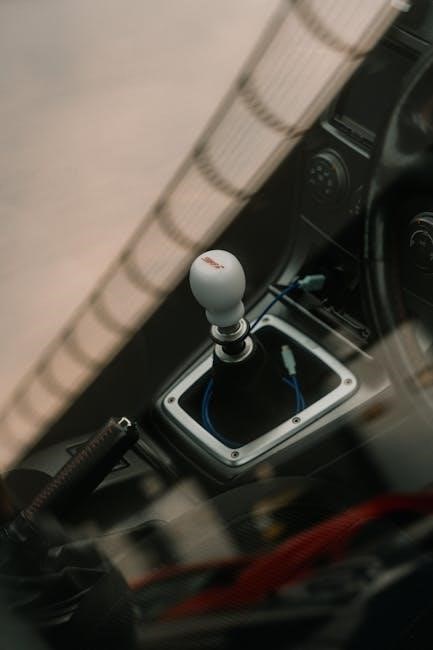
Choosing the Right Automatic Transmission
Choosing the right automatic transmission involves considering vehicle make, model compatibility, performance needs, and budget constraints. Selecting the correct unit ensures optimal functionality and durability.
Compatibility with Vehicle Make and Model
Compatibility with your vehicle’s make and model is crucial for a smooth conversion. Ensure the automatic transmission matches your car’s engine specifications, drivetrain layout, and power output. Front-wheel-drive and rear-wheel-drive vehicles require different setups. Always consult the manufacturer’s specifications or a mechanic to verify compatibility. Physical dimensions and mounting points must align with your car’s chassis. Using the wrong transmission can lead to installation challenges and poor performance. Proper compatibility ensures reliability and optimal functionality post-conversion.
Types of Automatic Transmissions Available
Several types of automatic transmissions are available for conversion, catering to different vehicle needs. Traditional automatics with torque converters are common, offering smooth acceleration. Continuously Variable Transmissions (CVTs) provide seamless, fuel-efficient performance. Dual-clutch automatics combine manual-like shifting with automatic convenience. Additionally, automated manual transmissions blend elements of both systems. Each type has unique benefits, such as improved fuel economy or enhanced driving dynamics. Choosing the right one depends on your vehicle’s specifications, driving habits, and performance preferences.
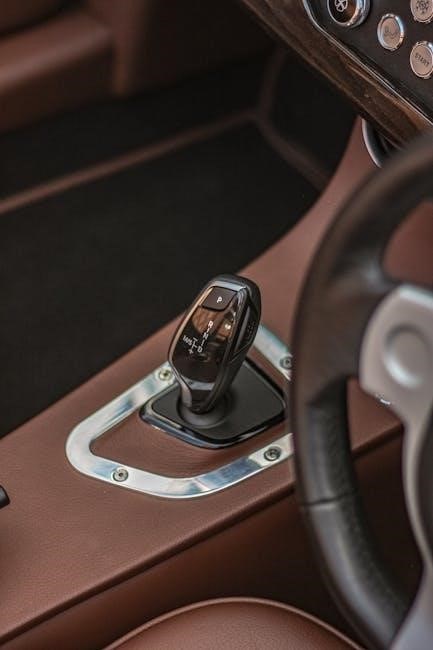
The Conversion Process
The conversion process involves preparing the vehicle, removing the manual gearbox, installing the automatic transmission, and modifying the drivetrain and electrical systems accordingly.
Step 1: Preparing the Vehicle for Conversion
Preparing the vehicle involves assessing its current condition, gathering necessary tools and parts, and ensuring compatibility with the automatic transmission. Disconnect the battery, drain fluids, and secure the vehicle on jack stands. Inspect the drivetrain and surrounding components for any damage or wear. Consult a repair manual for specific instructions and safety precautions. Organize all required parts and adapters to streamline the process. Ensure a clean, well-lit workspace to minimize errors and ensure safety during the conversion.
Step 2: Removing the Manual Gearbox and Related Components
Begin by disconnecting the battery to prevent electrical complications. Drain the transmission fluid and remove the driveshaft for better access. Disconnect the gearshift linkage, clutch pedal assembly, and any electrical connectors attached to the manual gearbox. Carefully lift and remove the manual transmission, along with the clutch and flywheel, as these components are no longer needed for the automatic setup. Ensure all bolts and mounts are cleared to prepare for the new transmission installation. Consult a service manual for specific removal steps.
Step 3: Installing the Automatic Transmission
Mount the automatic transmission securely to the engine, ensuring proper alignment with the bellhousing. Reconnect the driveshaft and torque converter, making sure they are properly seated and bolted. Link the transmission cooler lines and reconnect the electrical connectors for the solenoids and sensors. Fill the transmission with the recommended fluid level and test the system for leaks or malfunctions. Double-check all connections and ensure the transmission is functioning smoothly before proceeding to the next steps.
Step 4: Modifying the Chassis and Drivetrain
Modify the chassis to accommodate the automatic transmission, including crossmember adjustments and driveshaft alignment. Ensure the driveshaft length and angle are compatible with the new transmission. Check and adjust drivetrain components such as the differential and axles to handle the torque output. Install any necessary transmission mounts and crossmember supports for stability. Verify brake and suspension systems are compatible with the automatic setup. Test the drivetrain for proper function and alignment before finalizing the conversion.
Modifying the Electrical System
Rewiring the vehicle to support automatic transmission, including TCM and ECU reconfiguration, sensor installation, and software updates for seamless integration of the new transmission system.
Wiring Changes and ECU Reconfiguration
Converting to an automatic transmission requires significant wiring changes to integrate the new gearbox with the vehicle’s electrical system. This includes installing a transmission control module (TCM) and updating the engine control unit (ECU) to recognize the automatic gearbox. New sensors for gear position, torque, and engine speed must be connected. Software updates are necessary to ensure proper communication between the ECU and TCM. These modifications enable smooth gear shifting and optimal engine-transmission coordination, requiring professional expertise for accurate implementation.
Integrating the Automatic Transmission with the Vehicle’s Electronics
Integrating the automatic transmission with the vehicle’s electronics ensures seamless communication between the transmission control module (TCM) and the engine control unit (ECU). This involves connecting sensors for throttle position, vehicle speed, and engine RPM to the TCM. The system adjusts gear shifts based on driving conditions and engine load. Modern vehicles often require CAN bus integration for proper communication. A compatible TCM must be installed to interpret data and control the transmission effectively. Proper integration is critical for smooth operation and optimal performance.
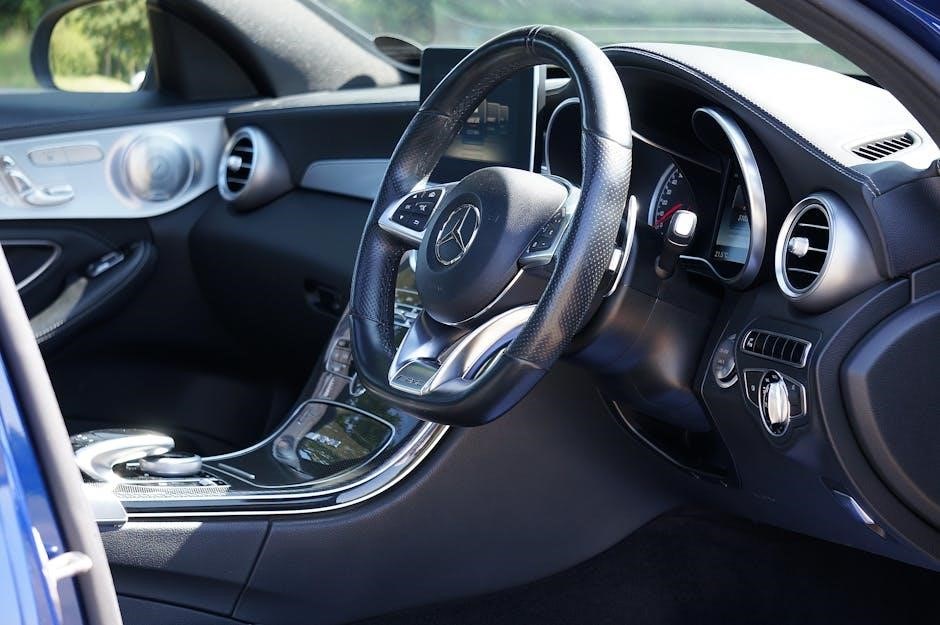
Replacing and Adjusting Key Components
Replacing the manual gearbox involves removing the clutch pedal, brake pedal, and shifter assembly. New gear shift cables and linkages are installed for automatic functionality.
Clutch Pedal, Brake Pedal, and Shifter Assembly Modifications
The clutch pedal is removed, as it is no longer needed. The brake pedal may require adjustment to accommodate the automatic transmission. The shifter assembly must be replaced with one compatible with the automatic gearbox. This involves installing new linkages or cables to ensure smooth gear shifts. Proper installation and adjustment are critical to prevent issues like unintended acceleration or gear misalignment. These modifications ensure the vehicle operates safely and efficiently with its new automatic transmission system.
Installing New Gear Shift Cables and Linkages
When converting a manual gearbox to an automatic, new gear shift cables and linkages must be installed to ensure compatibility with the automatic transmission. The existing manual cables and linkages are designed for driver input and won’t function with an automatic system. The process involves removing the old components and replacing them with cables and linkages designed for automatic shifting. Proper installation requires precise alignment and tensioning to prevent issues like delayed engagement or erratic shifting. This step is crucial for smooth operation and a seamless driving experience with the new automatic transmission.

Legal and Safety Considerations
Legal and safety considerations are vital when converting a manual to automatic. Ensure compliance with local regulations and safety standards. Conduct thorough inspections to guarantee reliability and safety on the road.
Ensuring Compliance with Vehicle Safety Standards
Converting a manual to automatic requires adherence to strict safety standards. Ensure all modifications meet local and national regulations, such as those set by the Department of Transportation (DOT). Safety features like braking systems and electronic controls must be properly integrated. Regular inspections by certified professionals are essential to verify compliance. Documentation of all changes is necessary for legal approval. Non-compliance can result in fines or vehicle registration denial. Always consult local authorities to ensure adherence to specific requirements.
Testing and Inspecting the Converted Vehicle
After conversion, thorough testing is crucial to ensure functionality and safety. Begin with a test drive to assess smooth shifting, acceleration, and braking performance. Check for any signs of transmission slippage or unusual noises. Inspect fluid levels, connections, and wiring for leaks or damage. Test electronic controls, such as the gear selector and adaptive modes. Ensure proper engagement of parking lock and reverse gear. A professional inspection is recommended to validate the conversion and certify roadworthiness.
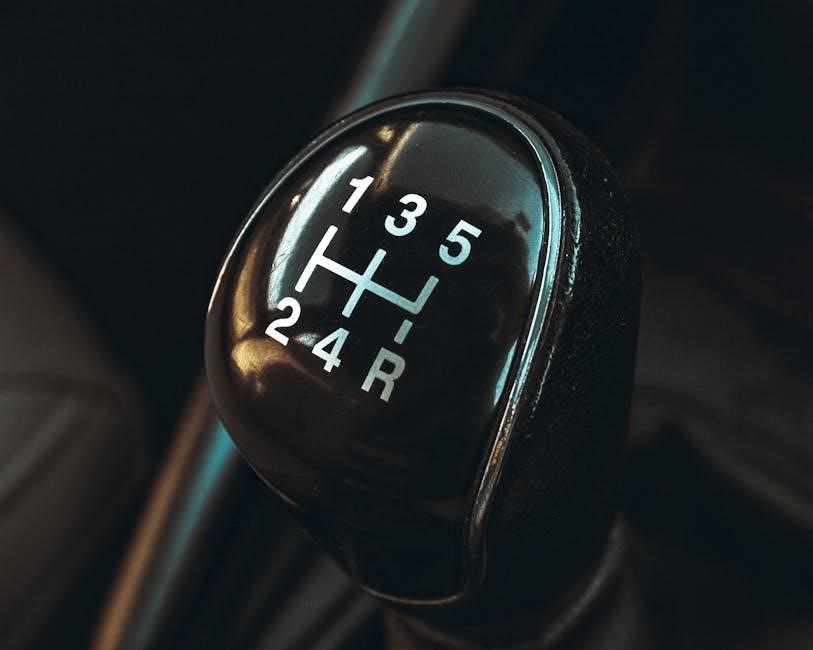
Pros and Cons of Manual to Automatic Conversion
Automatic transmissions offer smoother driving and reduced driver fatigue, ideal for urban commuting. However, conversion costs are high, and fuel efficiency may decrease slightly.
Advantages of an Automatic Transmission
Switching to an automatic transmission provides smoother acceleration and reduced driver fatigue, especially in heavy traffic or long commutes. It eliminates the need for manual shifting, making driving more accessible for new or less experienced drivers. Automatics also offer better low-speed maneuverability and improved safety, as drivers can keep both hands on the wheel. Modern automatic transmissions are highly efficient and reliable, often matching or exceeding manual transmission performance in many vehicles.
Drawbacks and Potential Downsides
Converting to an automatic transmission can be costly, with high initial expenses for parts and labor. It may also reduce the driving experience for enthusiasts who enjoy manual control. Fuel efficiency could decrease slightly, as automatics often consume more fuel than manuals. Additionally, the added weight of the automatic transmission might affect handling, and compatibility issues could arise if the new transmission doesn’t align perfectly with the vehicle’s engine or chassis. Maintenance costs may also increase due to the complexity of automatic systems.
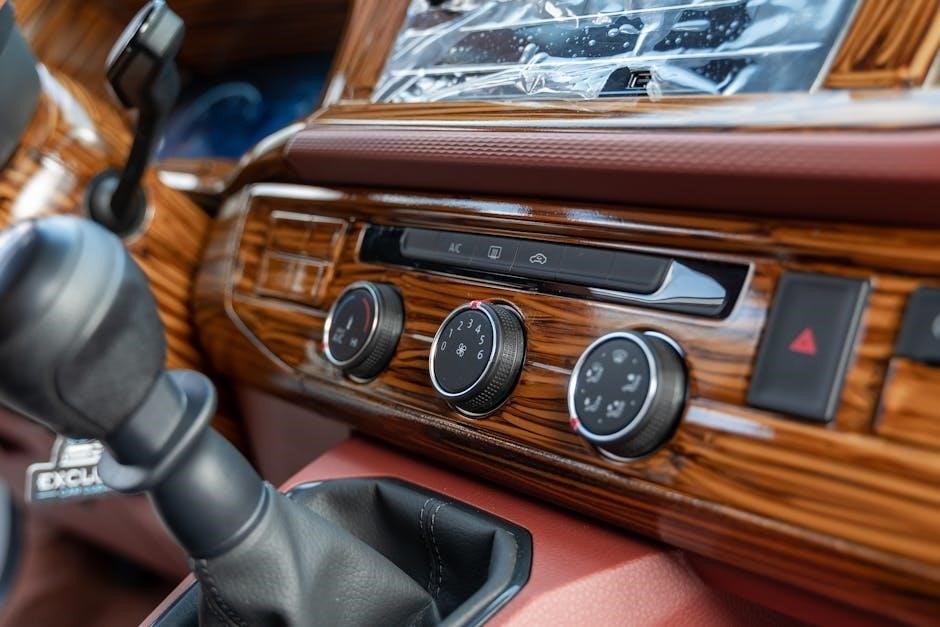
Maintenance and Performance Adjustments
Regular servicing, including fluid changes and filter replacements, is crucial for automatic transmissions. Performance adjustments may involve recalibrating engine settings to optimize power delivery and smooth operation.
Post-Conversion Maintenance Requirements
After converting to an automatic transmission, regular maintenance is essential to ensure smooth operation. This includes checking transmission fluid levels, inspecting for leaks, and replacing the filter as recommended; Additionally, the torque converter should be serviced periodically to maintain optimal performance. Drivers should also monitor the transmission’s cooling system to prevent overheating, especially in high-stress driving conditions. Adhering to the manufacturer’s maintenance schedule will help prolong the lifespan of the automatic transmission and prevent costly repairs.
Optimizing Performance for the New Transmission
To maximize performance after conversion, ensure the transmission is properly calibrated with the engine. Upgrading the cooling system can improve heat management, especially for high-performance driving. Adjusting the transmission’s torque converter to match the engine’s power output enhances acceleration and responsiveness. Regular fluid changes and filter replacements are critical to maintain smooth gear shifts. Additionally, consider upgrading to high-performance transmission fluid and ensuring proper drivetrain alignment for optimal efficiency and longevity.
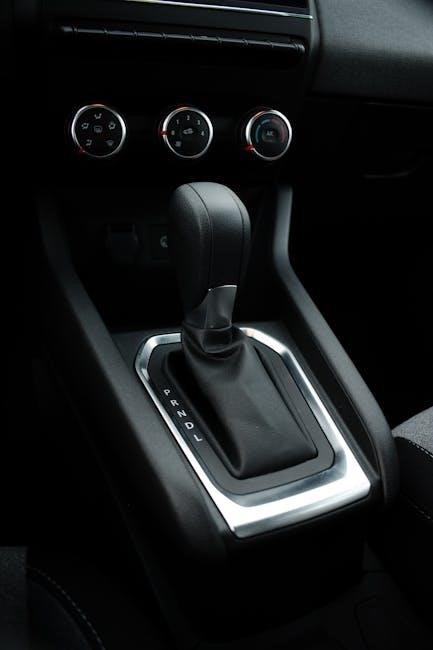
Alternatives to Conversion
- Purchasing a factory-fitted automatic vehicle may be more cost-effective and convenient than converting a manual gearbox.
- Exploring semi-automatic or continuously variable transmissions offers a balance between manual control and automatic ease.
Purchasing a Factory-Fitted Automatic Vehicle
Buying a vehicle with a factory-installed automatic transmission can be a more straightforward and reliable option than converting a manual gearbox.
It often comes with a warranty, ensuring peace of mind and avoiding the complexities of aftermarket conversions.
Additionally, factory-fitted systems are optimized for the vehicle’s performance, offering better integration and reliability compared to third-party modifications.
This option may also be more cost-effective in the long run, as it eliminates the need for extensive labor and potential risks associated with manual to automatic conversion.
Moreover, it provides access to advanced features like smooth gear transitions and improved fuel efficiency, tailored specifically to the vehicle’s design.
Many modern vehicles also offer advanced automatic transmissions with paddle shifters, blending convenience with driver control.
Ultimately, purchasing a factory-fitted automatic vehicle simplifies the process and ensures optimal performance without the hassle of modifications.
- Warranty coverage for factory-installed components.
- Better integration with the vehicle’s systems.
- Access to modern transmission technologies.
- Lower long-term maintenance risks.
Exploring Semi-Automatic or Continuously Variable Transmissions
Semi-automatic and continuously variable transmissions (CVTs) offer unique alternatives to traditional manual or automatic conversions.
Semi-automatic transmissions automate clutch engagement but retain manual gear shifting, providing a blend of control and convenience.
CVTs use belts and pulleys to deliver seamless, infinite gear ratios, optimizing fuel efficiency and smooth acceleration.
Both options are lighter and more compact than traditional automatics, making installation easier in some vehicles.
They are ideal for drivers seeking a balance between performance and ease of use without full automatic conversion.
- Improved fuel efficiency with CVTs.
- Simplified installation compared to traditional automatics.
- Retains some manual control with semi-automatics;
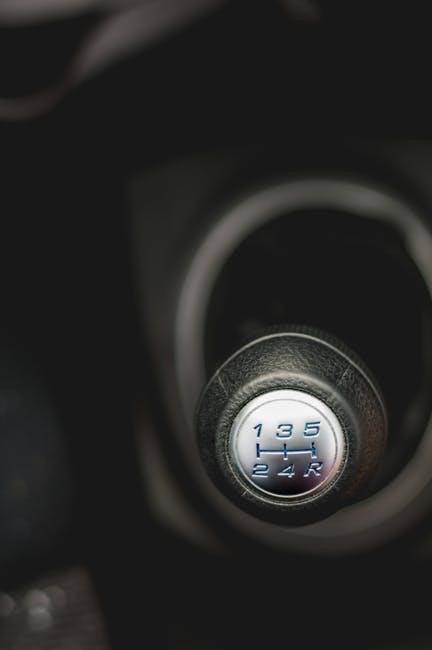
Troubleshooting Common Issues Post-Conversion
Address transmission slippage, engagement problems, or delayed shifting by inspecting fluid levels, sensors, and wiring connections. Check the ECU for error codes and verify torque converter functionality.
- Transmission slippage or hesitation during acceleration.
- Unusual noises or vibrations from the gearbox.
- Erratic shifting patterns or failure to engage gears.
Addressing Transmission Slippage and Engagement Problems
Transmission slippage and engagement issues post-conversion often stem from incorrect fluid levels, faulty sensors, or improper ECU configuration. Check the transmission fluid level and condition, ensuring it matches the automatic gearbox specifications. Inspect the solenoid pack and sensors for damage or wiring faults. Verify the torque converter is properly engaged and aligned. If problems persist, consult a transmission specialist to diagnose internal damage or software calibration errors. Regular maintenance and accurate troubleshooting are essential to restore smooth operation.
Resolving Electrical and Hydraulic System Malfunctions
Electrical malfunctions post-conversion often involve faulty wiring, sensors, or the ECU. Inspect connections and ensure proper wiring harness integration. Test sensors like the throttle position sensor and transmission speed sensor for accuracy. Hydraulic issues may arise from low fluid pressure or a malfunctioning solenoid pack. Check the hydraulic pump and fluid levels, and verify the torque converter’s operation. If problems persist, consult a specialist to diagnose and repair complex electrical or hydraulic system faults, ensuring seamless transmission performance and reliability.
Converting a manual to an automatic transmission offers enhanced convenience and smoother driving. Weigh the costs, effort, and benefits carefully before deciding. Professional guidance is recommended for optimal results.
Final Thoughts on the Conversion Process
Converting a manual gearbox to automatic demands careful planning, technical expertise, and a significant budget. While it enhances convenience and comfort, the complexity and costs may outweigh benefits for some. Drivers must assess their priorities, such as daily commuting needs or performance expectations, before committing. Professional assistance is crucial for a smooth transition. Ultimately, the decision should align with the vehicle’s intended use and the owner’s lifestyle to ensure satisfaction and reliability post-conversion.
Recommendations for Drivers Considering Conversion
Drivers contemplating a manual-to-automatic conversion should first assess their needs and budget. Prioritize whether convenience, ease of use, or performance is most important. Research compatible transmission options and consult a professional mechanic to ensure feasibility. Consider the long-term maintenance costs and how the conversion aligns with the vehicle’s intended use. Weigh the pros and cons carefully, as reversing the process can be costly. Planning and expert guidance are essential for a successful and satisfying outcome.
